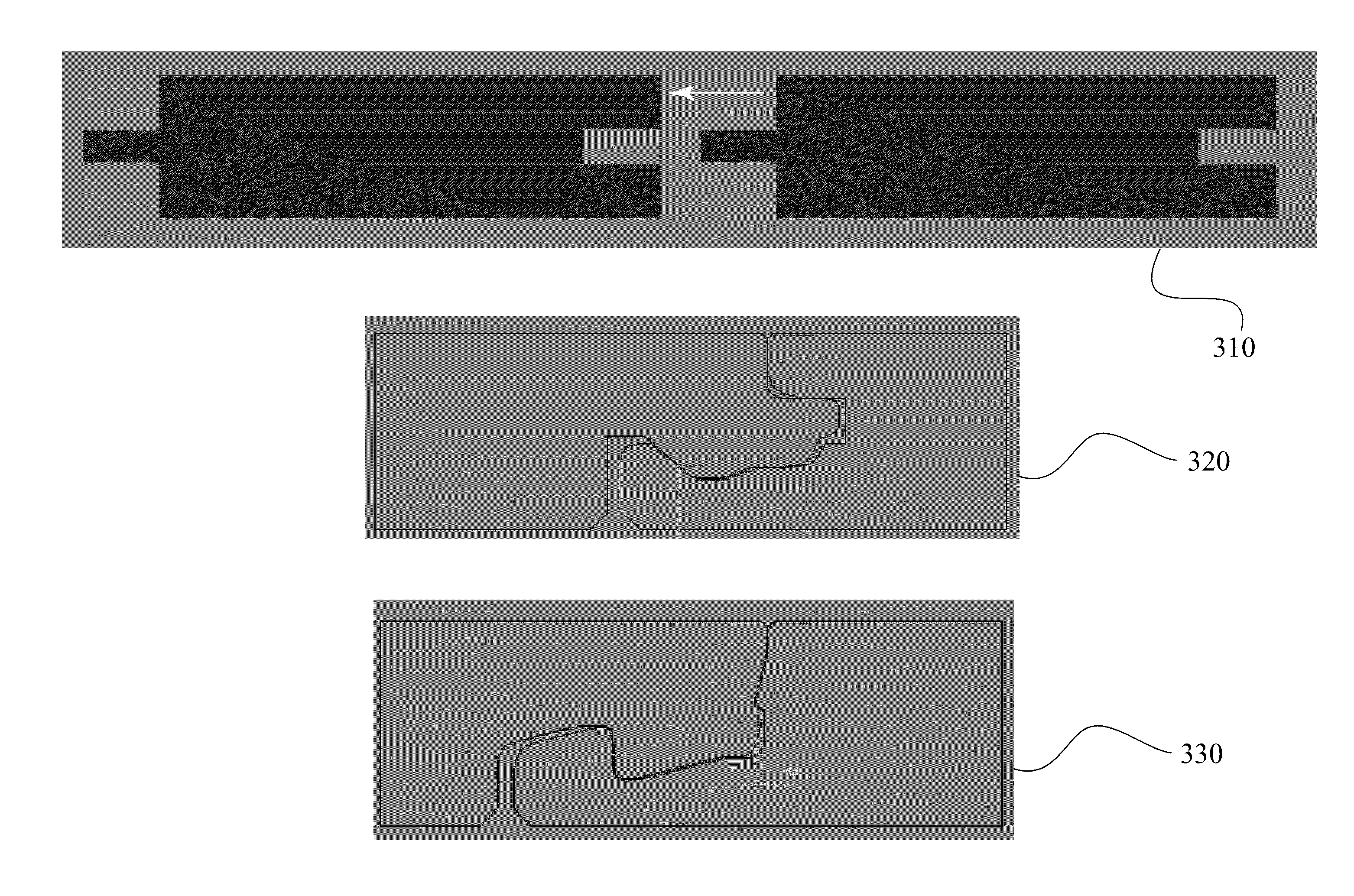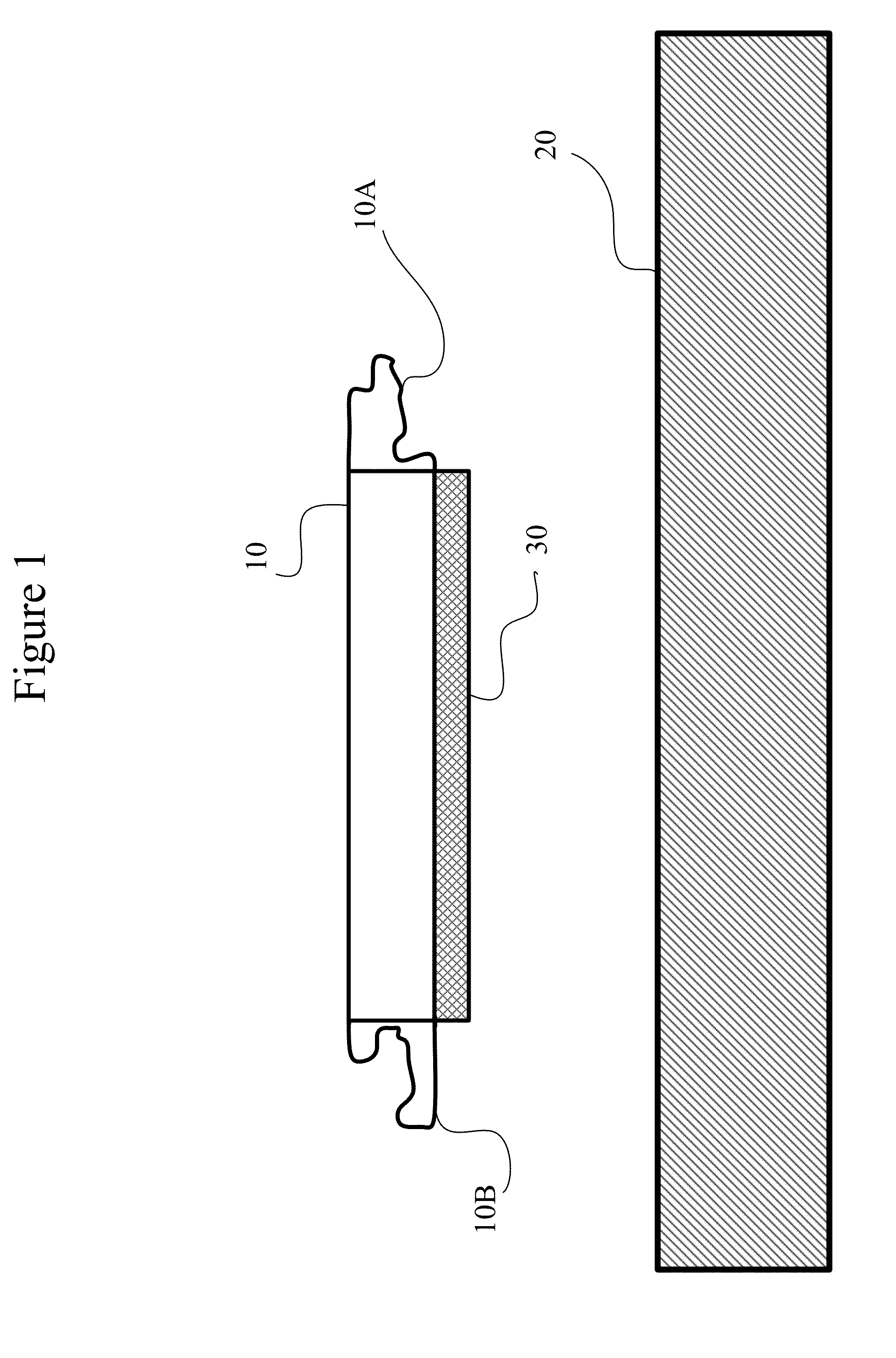Stable flooring products and method of making same
a technology of stable flooring and products, applied in the field of flooring products, can solve the problems of affecting the stability and traction of the flooring panel on the underlying surface, affecting the stability of the flooring, and introducing interlocking on all four sides, so as to achieve the effect of safer interlocking flooring
- Summary
- Abstract
- Description
- Claims
- Application Information
AI Technical Summary
Benefits of technology
Problems solved by technology
Method used
Image
Examples
Embodiment Construction
[0025]A central aspect of the invention is the discovery that provision, on an interlocking flooring product such as a panel, of frictional backing material resistant to movement against a surface on which the panel is to be laid is effective to mitigate undesired instability of the panel during and after installation. The invention extends to all manner of flooring products, whether of natural or synthetic material or a combination thereof, including laminate panels and especially such panels having a reduced thickness in accordance with the invention disclosed in U.S. patent application Ser. No. 13 / 114,873, filed May 24, 2011, the subject matter of which is incorporated herein by reference. Preferably, panels are provided with a frictional backing material that exhibits a coefficient of friction, typically a coefficient of static or kinetic friction, vis-à-vis the constituent material making up the surface on which the panel is laid. That coefficient is typically greater than a co...
PUM
 Login to View More
Login to View More Abstract
Description
Claims
Application Information
 Login to View More
Login to View More - R&D
- Intellectual Property
- Life Sciences
- Materials
- Tech Scout
- Unparalleled Data Quality
- Higher Quality Content
- 60% Fewer Hallucinations
Browse by: Latest US Patents, China's latest patents, Technical Efficacy Thesaurus, Application Domain, Technology Topic, Popular Technical Reports.
© 2025 PatSnap. All rights reserved.Legal|Privacy policy|Modern Slavery Act Transparency Statement|Sitemap|About US| Contact US: help@patsnap.com



